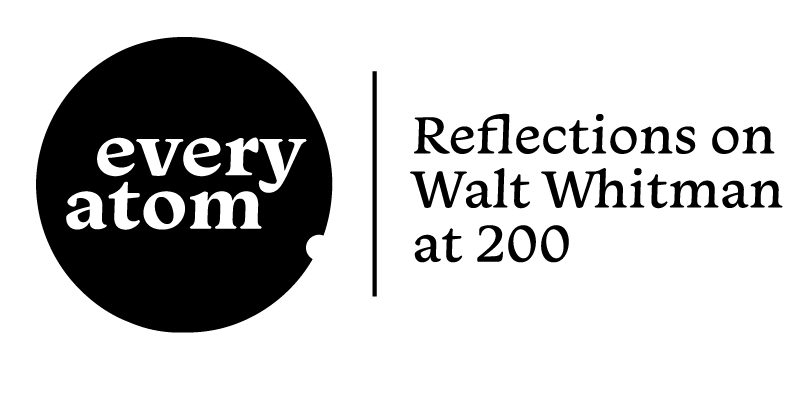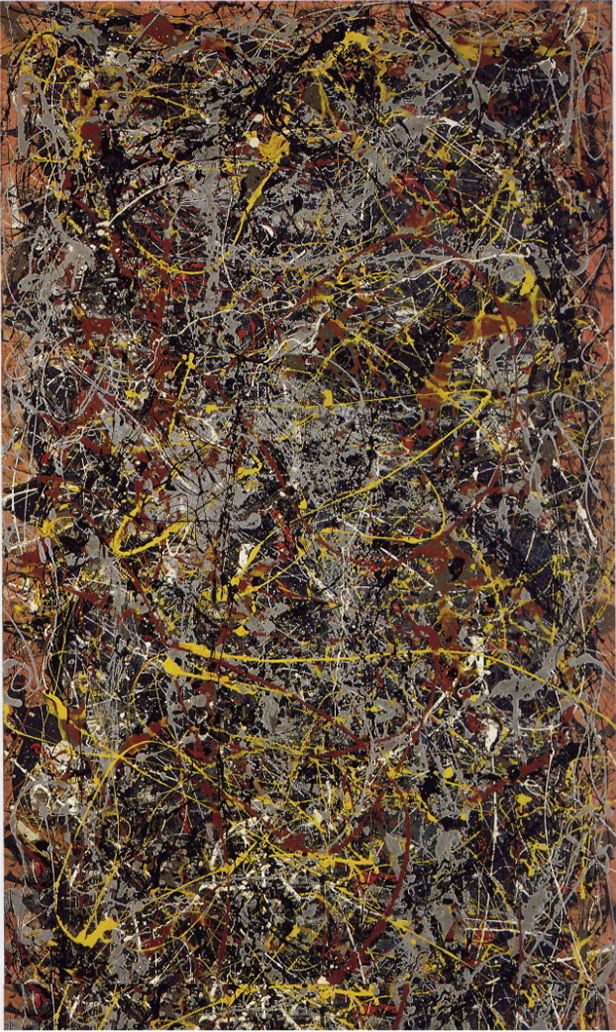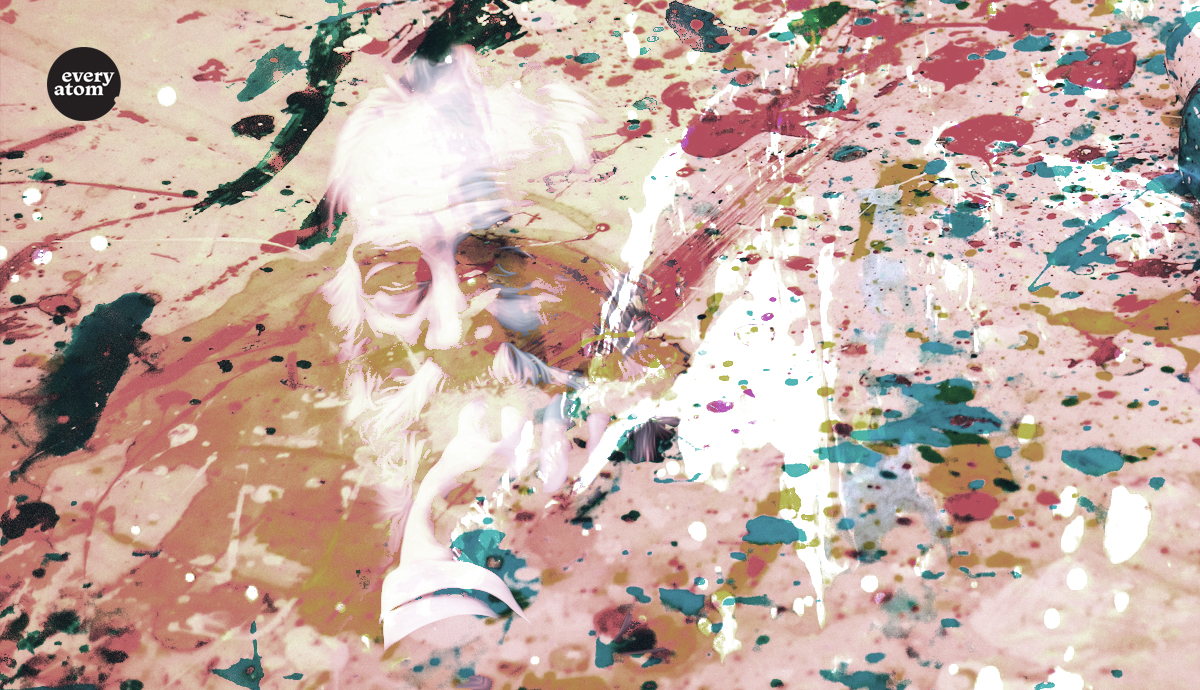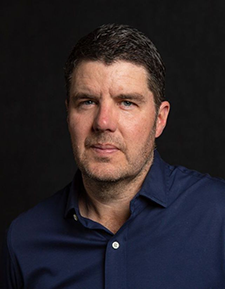Every Atom | No. 149
Introduction to Every Atom by project curator Brian Clements

The groups of newly-come immigrants cover the wharf or levee,
The woollypates hoe in the sugarfield, the overseer views them from his saddle;
The youth lies awake in the cedar-roofed garret and harks to the musical rain,
The Wolverine sets traps on the creek that helps fill the Huron,
The reformer ascends the platform, he spouts with his mouth and nose,
The squaw wrapt in her yellow-hemmed cloth is offering moccasins and beadbags for sale,
The connoisseur peers along the exhibition-gallery with halfshut eyes bent sideways,
The deckhands make fast the steamboat, the plank is thrown for the shoregoing passengers,
The one-year wife is recovering and happy, a week ago she bore her first child,
The cleanhaired Yankee girl works with her sewing-machine or in the factory or mill,
The nine months’ gone is in the parturition chamber, her faintness and pains are advancing;
The canal-boy trots on the towpath—the bookkeeper counts at his desk—the shoemaker waxes his thread,
The conductor beats time for the band and all the performers follow him,
The child is baptised—the convert is making the first professions,
The regatta is spread on the bay . . . . how the white sails sparkle!
Last year, I re-read Clement Greenberg’s 1948 then-influential essay “The Crisis of the Easel Picture” in which he lays out his theory of what he called the “all-over picture.” He begins his long description of the technical details of such paintings by arguing that the all-over picture “relies on a surface knit together of identical or closely similar elements which repeat themselves Without marked variation from one edge of the picture to the other. It is a kind of picture that dispenses, apparently, with beginning, middle, end.” Greenberg’s model for the all-over picture is, of course, Jackson Pollock, but when I first read these sentences it was not Pollock I thought of but Walt Whitman. But, then, I thought of Pollock, and I began to read Pollock through the lens of Whitman.
Pollock is often believed to have arisen out of the emotive paintings of German Expressionism and the abstract canvases of people like Wassily Kandinsky or Juan Gris, but I think his truest aesthetic antecedent—even if he is not a direct influence—is the Walt Whitman of “Song of Myself.”
I was disappointed in myself that it took so long for me to make what seemed to me to be many and obvious correspondences between the two artists. Both completely exploded the boxes of their fields, both were mocked then canonized, both honed images of rugged individuality, both linked their art and their personas with American iconoclasm, and both reimaged how a poet and a painter use a page and a canvas. Pollock, at his height, was more Whitmanian than Whitman.
Greenberg goes on:
Just as Schoenberg makes every element, every sound in the composition of equal importance—different but equivalent—so the “all-over” painter renders every element and every area of the picture equivalent in accent and emphasis. . . . many “all-over” pictures seem to succeed precisely by virtue of their uniformity, their sheer monotony. The dissolution of the pictorial into sheer texture, into apparently sheer sensation, into an accumulation of repetitions, seems to speak for and answer something profound in contemporary sensibility.
It is difficult—almost impossible—to read this passage and not think of the Whitman lines printed above, or, for that matter, any number of the “accumulation of repetitions” that make up Whitman’s epic anti-epic. Greenberg’s notion of “equivalence” is especially relevant to “Song of Myself.” In a list like the one above, each person is equal to every other person; each job equal to every other job. In fact, every line in the poem works much like every splatter line in a Pollock painting. In a piece like No. 5, each the “lines” take up the entire aesthetic field, they are interchangeable with each other, they feel scattershot and random but are, in fact, part of a chaotic order.

© 2019 The Pollock-Krasner Foundation / Artists Rights Society (ARS), New York
Something about the all-overness of Pollock and Whitman also deemphasizes content in both liberating and disturbing ways. In the 1950s Pollock could have addressed the Holocaust, civil rights, the Cold War, or, as one who claimed to model his creative practices on Navajo sand painting, the ethics of this country’s Native American Termination policies. But, his work was (gloriously) (or notoriously) value-free. On the opposite but not unrelated end, words like “squaw” and “darkey” in the passage above are racist by our standards now, but the poem’s unruliness, its trellised figuration, its borderlesness buries the micro detail in favor of the project’s macro totality. Both men make political mistakes, but I admire their aesthetic ambition. There is an accrual, a piling on, a scaffolding of color and contour, line and layering. Ultimately, for them, craft is their content.
One could argue that the art world was prepared for what Pollock’s work did to painting because it had seen and lived through what Whitman’s poems did to poetry. Nothing was the same after Pollock, just as nothing was the same after Whitman. Not the page, not the canvas, not the country.
Recommended
Nor’easter
Post-Op Appointment With My Father
Cedar Valley Youth Poet Laureate | Fall 2024 Workshop






